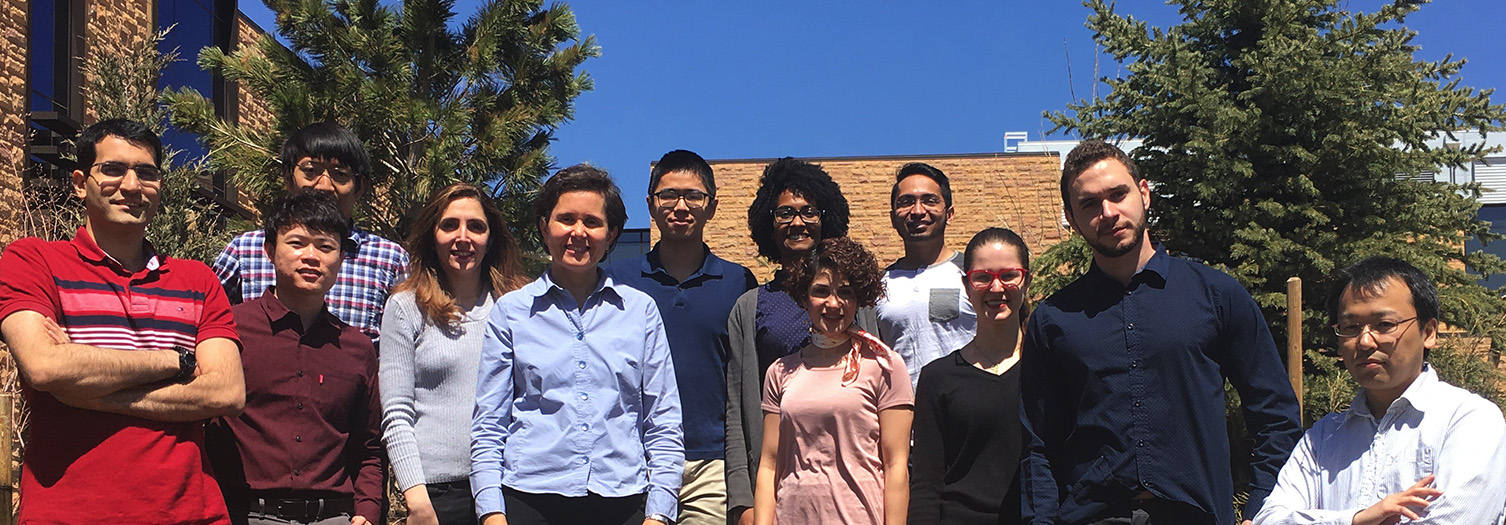Research projects
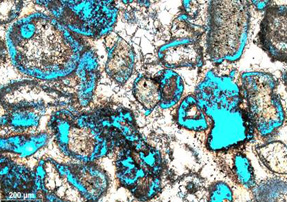
Aquifer Remediation
The impacts of mineralogy and wettability on the transport and remediation of NAPLs in heterogeneous rocks are explored in this NSF CAREER project and disseminated into effective learning tools.

The research described in this NSF CAREER project is emphasized as a critical area of Science and Technology under the University of Wyoming Plan and the Wyoming NSF EPSCoR program. The objective is to investigate the effect of mineralogy and wettability on the transport and remediation of NAPLs in heterogeneous rocks. The project is designed to conduct innovative high-impact research activities that will be disseminated into effective learning tools. It provides great opportunities to train students through multi-facet research and education in STEM-related areas using state-of-the-art imaging and modeling techniques.
X-ray computed microtomography is used: (i) to generate high-resolution maps of pore space topology and mineralogy in rock samples from which network models are constructed, and (ii) to perform well-characterized in-situ flow experiments to measure fluid occupancy and the effect of chemical additives on NAPL remediation in the same rocks. The impact of NAPLs on wettability alteration is examined using a state-of-the-art interfacial tension and contact angle apparatus. A pore-scale network model is also used for two-phase flow simulations and rigorously validated against experimental data to predict the performance of surfactant-enhanced remediation methods. The model uses most realistic representations of pore-space topology and explicitly accounts for heterogeneities in rock mineralogy and wettability on a pore-by-pore basis to faithfully predict the impact of wettability alteration on NAPL displacement mechanisms in heterogeneous rocks.
Results from this investigation are expected to advance knowledge and understanding in industrial applications such as management and optimization of water resources, remediation of contaminated aquifers, underground storage of flue gases, and improved oil recovery from conventional and unconventional resources.
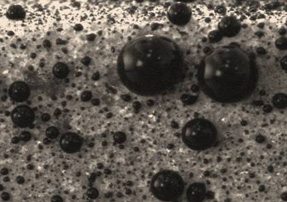
Hydrocarbon Recovery
We study the mechanism of interactions involved in oil/brine/rock systems and the pore-scale displacement mechanisms using multi-scale experiments and molecular dynamics simulations.

The objective of this project is to study the impact of surfactants, microemulsions, and nanoparticles on oil recovery from conventional and unconventional reservoirs. We propose new systematic procedures to screen surfactants and explore synergistic effects in surfactant blends. Measurements are performed under ambient and reservoir conditions using core-flooding experiments combined with x-ray microtomography. The outcomes reveal novel structure-function relationships that relate surfactant molecular architectures to their emulsification, dynamic interfacial tension, wettability, and imbibition behaviors. Results on outcrops and reservoir rocks indicate that rock wettability and roughness play an important in the mechanism of oil recovery with such additives. The effects of several parameters such as surfactant type, oil composition and aging, rock mineralogy and roughness, nature and proportion of solvents, temperature, water chemistry and saturation are investigated in a systematic manner.
Another motivation is to understand the mechanism of interactions involved in oil/brine/rock systems and the displacement mechanisms in subsurface formations using large-scale atomistic molecular dynamics simulations. The goal is to develop an improved insight into the effects of solid-fluid interactions on the threshold capillary pressure of oil/brine displacements in mineral nanopores with different topology and roughness. Fully atomistic models are utilized to represent crude oil, brine, and mineral in order to accommodate electrostatic interactions and H-bonding between the polar molecules and solid surfaces. The interfacial tension between oil and brine and their contact angle on solid surfaces are also simulated. We study the effects of oil composition, brine composition (e.g., salinity, surfactants, etc.) and temperature and pressure conditions on these properties.
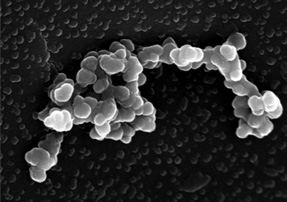
Fouling Mitigation
Asphaltene deposition in flow lines is investigated in this project using various capillary tube configurations under ambient and HPHT conditions combined with high-resolution imaging techniques.

One of the most critical challenges facing the oil industry today is assuring fluid flow through ultra-deep sub-sea wells such as those found in the Gulf of Mexico. Potential impediments include the formation of organic deposits in flow lines due to changes in fluid composition (especially near the bubble point pressure), leading to significantly high intervention costs. Therefore, extracting maximum value from these wells requires a good grasp of the fundamental mechanisms involved in the deposition process. The objective of this project is to better understand the mechanism of asphaltene deposition in crude oil systems and characterize the deposited fractions at ambient and reservoir conditions using different capillary tube configurations combined with high-resolution imaging techniques. These findings are in turn used to select additives and surface coatings that are most suitable for fouling mitigation.
Large-scale MD simulations are also performed using atomistic and coarse-grained models in order to understand the aggregation of polydisperse asphaltene mixtures in bulk phases and their interactions with solid surfaces. Specific intermolecular forces are quantified between nanoaggregates, clusters, and flocculates. The molecular details of aggregates formed in these simulations enable the microscopic mechanisms of asphaltene-dispersant interactions to be assessed. The main outcomes of this project will lead to creative and dynamic advances in several energy-related fields, including fouling and formation damage prevention technologies in both upstream and downstream oil industries, as well as remediation of oil-contaminated aquifers and oil spill cleanup.
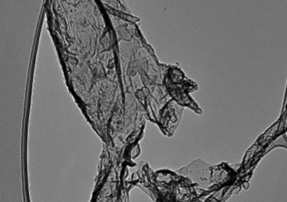
Carbon Engineering
Graphene-based materials are synthesized from coal and petroleum using bottom-up and top-down techniques and used as flow enhancers, oil adsorbents, and electrodes for energy storage.

We use Wyoming coal liquefaction tars as inexpensive carbon feedstocks that are highly enriched in polycyclic aromatic hydrocarbons (PAH), ranging from small benzene-like molecules to highly polarizable ones called coal-derived asphaltenes. The tars are fractionated into classes of compounds according to their functionalities and molecular weight using solvents with ascending polarity. The chemistry and composition of the collected sub-fractions are determined by various spectroscopic and imaging techniques. The knowledge of the molecules which report to each sub-fraction is of tremendous value to the UW coal refinery model and also help to understand which processes provide materials which are best for which end product. Graphene-based materials are then synthesized from coal tar fractions using bottom-up and top-down techniques and used as oil flow enhancers, adsorbents for oil spill cleanup, as well as electrodes for energy storage.
Principal Investigator
Dr. Lamia Goual
University of Wyoming
Engineering Building, Room 4028
High Bay Research Facility, Room 239C
1-307-766-3278 | lgoual@uwyo.edu
Mailing Address
Dr. Lamia Goual
University of Wyoming
Department of Petroleum Engineering
Dept. 3295, 1000 E. University Ave.
Laramie, WY 82071-2000, USA
1-307-766-3278 (Office)
Shipping Address
Dr. Lamia Goual
University of Wyoming
Department of Petroleum Engineering
16th and Gibbon Street
Laramie, WY 82071-2000, USA
Shipping

